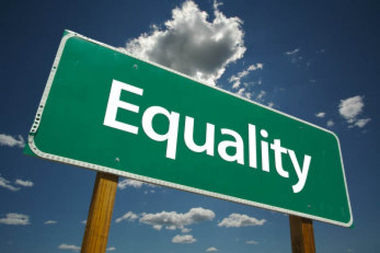2015: An astounding year, but there is still work to be done

by Rob Howard
Political Columnist
When the ball dropped in New York City’s Times Square ringing in 2015, 37 states had marriage equality. The preceding 18 months after the Supreme Court’s Windsor decision had seen what I early on called “a tsunami of marriage equality,” raising the number of states with same-sex marriage from nine when Windsor was decided, to the 37 on January 1.
In 2015, we saw what is viewed as the most significant LGBT rights victory in our movement’s history – the Obergefell decision on June 26, effectively making marriage a constitutional right for all citizens, and extending marriage equality nationwide.
The year also saw remarkable progress in extending protections against employment discrimination based on sexual orientation and gender identity. Although there is no federal law explicitly banning anti-LGBT discrimination, in July the federal Equal Employment Opportunity Commission, supported by the Justice Department and the Education Department, ruled that employment discrimination based on sexual orientation violated federal law.
The EEOC’s decision built on their 2012 decision ruling discrimination in employment based on gender identity and gender non-conformance to be illegal, and in 2015 the agency got aggressive in filing lawsuits against businesses that violate these rules.
And finally, Caitlyn Jenner came out, announcing her transition in an interview with Diane Sawyer on 20/20 in April, and announced her name change to Caitlyn in the July issue of Vanity Fair. Jenner’s transition and celebrity status helped a lot of Americans better understand transgender issues, and the difficult process transgender persons go through to be true to who they are.
Changes in public opinion have made many of these changes possible. In 1996, 65 percent of Americans opposed marriage equality; by 2009, opposition had dropped, but a majority of 54 percent still opposed it. By the time of the Obergefell decision in June, 55 percent supported same-sex marriage, with only 39 percent opposing it.
With that backdrop, you would expect that states would conform their laws on things like parental rights to the marriage equality decision, but that has not always proved so. There have been several lawsuits seeking to have both same-sex parents on a child’s birth certificate, after officials have denied doing so because the paternity laws mention only husband and wife. When a heterosexual couple has a baby by artificial insemination, the husband is automatically listed as the father (if he agreed to the AI in advance).
Several states have been dragging their feet over either amending their laws to recognize that marriage is gender-neutral, or implementing a gender-neutral view of the issuance of birth certificates by administrative policy. Birth certificates aren’t the only areas of law that use gender specific terms for spouses, and all these areas remain a matter of contention in several states. The federal government, on the other hand, has broadly interpreted Obergefell as governing law in interpreting federal statutes that are gender specific.
The biggest backlash has been in conservative states that seek to allow officials, and sometimes all citizens, to refuse to recognize same-sex marriage, and to refuse service to couples, based on their personal “sincerely held” religious beliefs. Both Indiana and Arkansas passed laws that were effectively permission to discriminate against gay couples. A national firestorm descended on them both, and they changed their law, but several states are considering similar laws.
Utah, to its credit, and at the urging of the Mormon Church, passed a law that respected religious belief, but banned discrimination against LGBT citizens. That model worked for LGBT advocates in Utah, and could certainly work elsewhere.
In the fight for transgender rights, although Caitlyn Jenner’s transition helped public understanding, there are still fights over whether transgender persons can use restrooms and locker rooms based on their gender identity rather than their gender assigned at birth.
Transgender student athletes face varying policies on whether or not they can participate on teams that conform to their gender identity. Only 14 states have inclusive policies that require no medical hormones or surgery. Seven are discriminatory, requiring team membership based on their birth certificate, or requiring surgery and hormone waiting periods. 14 allow participation, but need some modifications. And 15 have no policy on transgender athletes at all.
The bottom line? We need to continue to work for LGBT protections against discrimination in employment, housing and accommodation, in both national and state laws, and for protection of all LGBT students. 2015 has been a great year for LGBT rights, but we still have a lot of work to do.
Happy Holidays to you all. If the holiday spirit moves you, you might consider a donation to the LGBT advocacy or service group of your choice.
The Gayly - 12/23/2015 @ 12:19 p.m. CST





